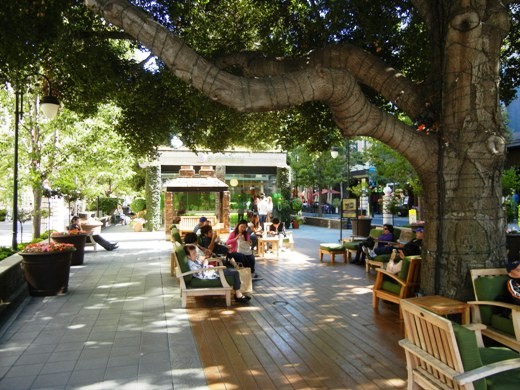In our Open Voices blog we share insight from leaders in our communities who are advancing what it means to have sacred, open green spaces in our cities. This month we examine the health needs of older Americans and the array of healthy experiences found in Nature Sacred spaces.
Cultures over the past thousands of documented years (if not more!) incorporated gardens and trees in their origin stories or traveled to natural springs in search of health and healing. Most of us deeply feel what some theorists call the theory of biophilia, the claim that humans have an innate affinity and need for contact with other living beings. If you are reading this, it is probably not news to you that green spaces in our urban neighborhoods are beneficial in many ways! An abundance of research over the past forty years provides evidence that spending time in metro green spaces can improve blood pressure, heart rate, stress hormone indicators (cortisol), white-blood cell count, attention, memory, mood, and self-esteem. For example, when humans garden our cognitive abilities improve, we experience pleasing sensory and aesthetic experiences and improved neural connections contributing to socio-emotional emotions. 1
The question is no longer ‘Do I benefit from nearby nature’? and now is more like: ‘What is happening in our bodies, minds and interactions? What are other people experiencing? If this is something innate in us, are we missing out on life by living in cities?’

In addition to mental and physical health, research findings do indicate there is a correlation between the presence of public, green spaces and informal social interactions. The more trees and vegetation around us, the more likely we’ll use common spaces and exhibit stronger neighborhood social ties. These improvements are common across most ages, ethnicities, locations and gender. 2 3 Even in an assisted living facility, residents in their early 80s participating in a 5-week indoor gardening health program improved physically and socially (compared to a 2-week program). 4
For those whose mobility is challenged due to age or health, being able to interact with other living beings (humans, companion animals, trees) can play a large role in everyday health. Communities designed and supportive of all residents benefits the health of everyone. And, the importance of social interaction in fostering elder health can’t be overstated. 5 Declining physical health and feelings of loneliness are common as we age. In the United States, significantly more than half of people over 85 are women. For women 65 and older, compared to men in their same age bracket, older women are less likely to go outside, tend to have less savings and are more likely to be widowed. 6 7

- Among the elderly, decreased loneliness is correlated with lower mortality rates, depression, and cognitive impairment. 8 9
- Strong community networks strengthen our elder members’ personal control and self-esteem and buffer the effects of stress, poor health, and feelings of isolation. 10
- Older adults who have more exposure to green common spaces report a stronger sense of unity among neighbors and a stronger sense of belonging. 11
- Women aged 55-84 living in Texas were more likely to be physically active if their nearby environment (a boundary of a half-mile street distance from home) was greener. 12 In a similar study, older women who perceived that walking trails, parks and other amenities were located within a 20 minute walking distance from their homes walked longer distances compared to women who did not perceive their neighborhood as favorably. 13
- Elderly women in a Japanese healthcare facility entered a physiologically relaxed state (heart rate variability) when in a specially designed rooftop forest. 14 Viewing a natural landscape through the windows of a retirement center also correlated with lower blood pressure and heart rate in a study of elderly Canadian women. 15
Continued physical and mental activity and sustained social connections are vital conditions for maintaining a healthy life. Nearby green space can foster many of these conditions but for many urban residents, nearby nature opportunities are lacking. Do projects in your city include residents in community planning? Is development in your city relevant and stable, and does it enhance intergenerational well-being among residents?
—-
